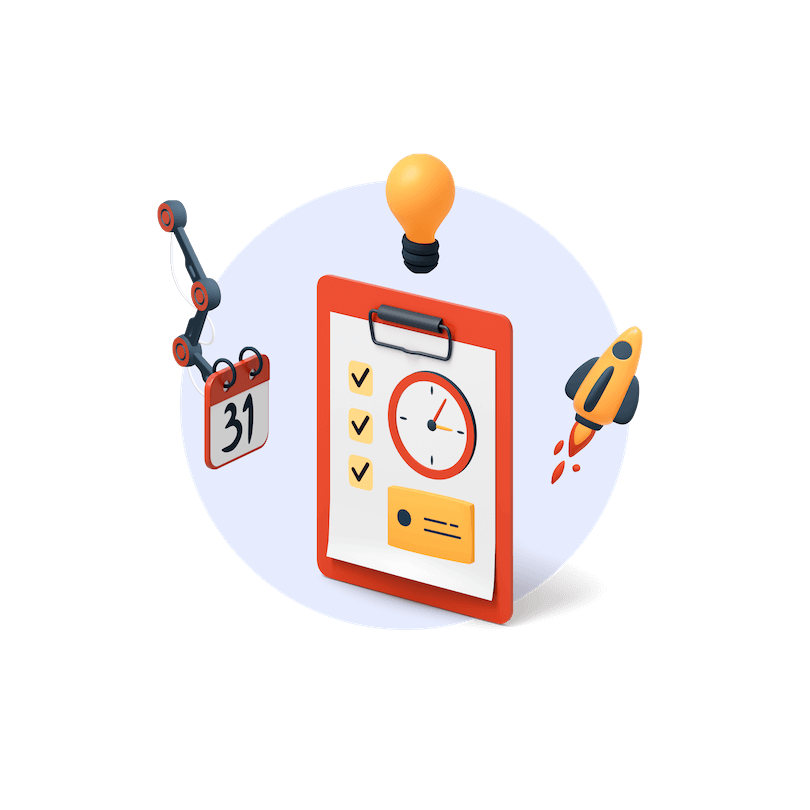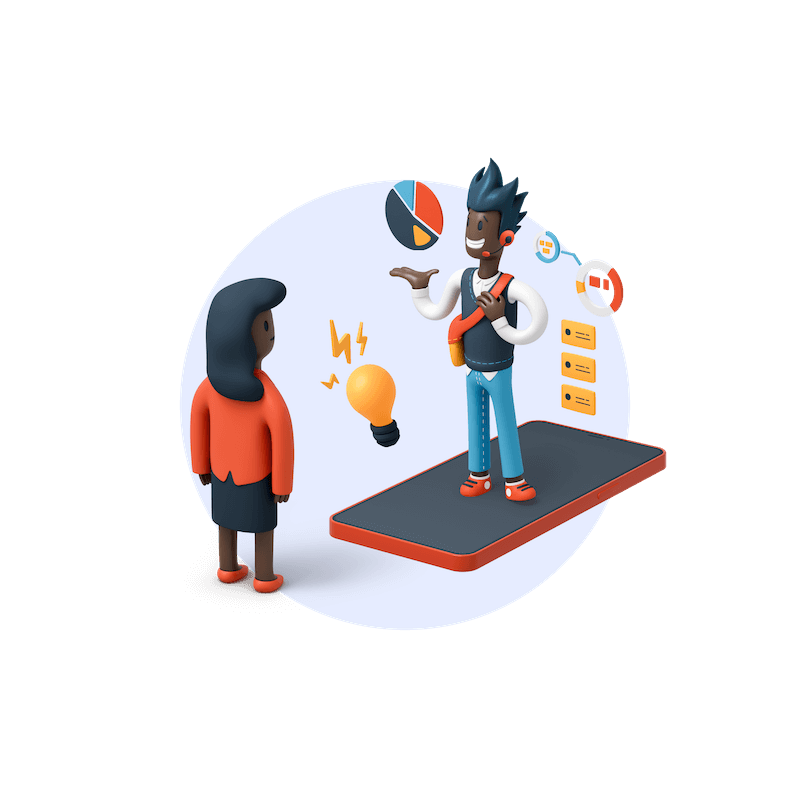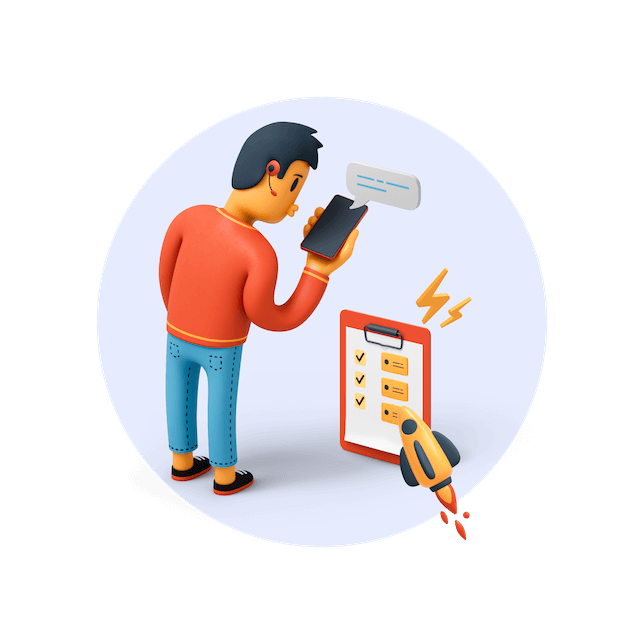When you’re running a business, it’s important to keep track of your assets. This can include everything from office supplies to computers and printers. Asset tracking software is a crucial tool for any business. It can help you keep track of your inventory, know when items need to be restocked, and even track the location of your assets. This can be especially helpful if you have a large number of assets or if your assets are located in multiple locations.
Luckily, there are a number of different software options that can help you do this. In this blog post, we’ll take a look at some of the best free, open-source asset-tracking software options available. We’ll also discuss some of the features these programs offer and how they can help your business stay organized. Let’s get to the basics first.
Table of Contents
What is Asset Tracking Software?
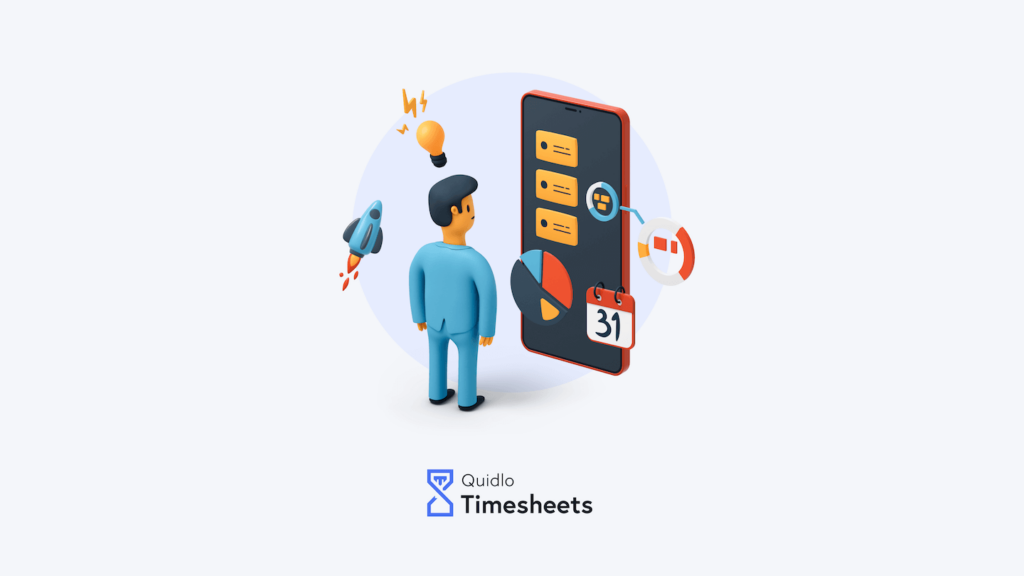
Office Asset Management Software is a computer program that helps businesses keep track of their office assets. This can include items such as furniture, computers, printers, and other equipment. The software can help businesses to keep track of where their assets are located, how they are being used, and when they need to be replaced. Additionally, the software can provide valuable information about the depreciation of assets and the potential for future repairs or replacement costs. By using Office Asset Management Software, businesses can save time and money by more effectively managing their office assets.
Important Features Of An Office Asset Management Software
At its core, Office Asset Management Software helps you keep track of your organization’s physical assets. This can include everything from office equipment and furniture to company vehicles and computer systems. By keeping accurate records of your assets, you can make sure that they are properly maintained and protected against theft or damage. Additionally, office asset management software can help you save money by reducing the need for costly repairs or replacements. Here are seven important features to look for in an asset management system:
1. Accurate asset tracking
An asset management system should allow you to quickly and easily track the location and status of your organization’s assets. This information can be vital in the event of an emergency, such as a fire or flood. Additionally, it can help you determine if an asset is lost or stolen.
2. Comprehensive asset tracking
In addition to tracking the location of your assets, an asset management system should also provide information on the value, purchase date, and insurance policy for each asset. This information can be used to create a budget for replacement costs or to file an insurance claim in the event of damage or loss.
3. Asset maintenance records
Keeping a detailed maintenance history for each asset can help you extend its lifespan and avoid costly repairs. An asset management system should allow you to create and track maintenance records, including service dates, installed parts, and authorized technicians.
4. Equipment compatibility
With a growing number of digital devices in the workplace, it’s important to make sure that your asset management system is compatible with the devices that your employees use. Otherwise, you may have difficulty accessing important data or be unable to take advantage of new features.
5. User-friendly interface
An asset management system is only as effective as its users’ ability to understand and use it. For this reason, it’s important to choose a system with a user-friendly interface that is intuitive and easy to navigate. Otherwise, you may find yourself wasting time trying to figure out how to use the software instead of using it to manage your assets effectively.
6. Scalability
As your business grows, so too will the number of assets under your care. For this reason, it’s important to choose an asset management system that is scalable and able to accommodate a growing number of assets without significant performance issues. Otherwise, you may find yourself having to replace the software altogether as your business grows larger.
7. Affordable pricing
One of the most important factors to consider when choosing an asset management system is its price tag. Make sure to compare prices between different vendors before making a decision – sometimes, cheaper isn’t always better. However, don’t let price be the only factor in your decision-making process – consider all of the features that are important to you before making a purchase.
Types Of Office Asset Management Software
When it comes to choosing the right office asset management software for your business, there are two main types to choose from: commercial and open-source. Commercial software is typically well-supported and easy to use but can be quite expensive. On the other hand, open-source software is often free or very low-cost but may require more technical expertise to configure and use. So, which type of office asset management software is right for you? Here’s a quick overview of the pros and cons of each to help you make the best decision for your business.
- Commercial office asset management software is usually easy to use and comes with excellent support from the vendor. However, it can be quite expensive, especially if you need to purchase licenses for multiple users. Commercial software is a good choice for businesses that don’t have the internal resources to support an open-source solution.
- Open-source office asset management software is often free or very low-cost, making it a great option for businesses on a tight budget. However, open-source solutions can be more complex to configure and use and may not come with as much vendor support. If you have the internal resources to support an open-source solution, it can be a great way to save money on your office asset management needs.
Ultimately, the decision of which type of Office Asset Management Software to use depends on the needs of the customer. If cost is a primary concern, then open-source software may be the better option. However, if ease of use is a priority, then commercial software may be a better choice.
What Features Asset Tracking Software Should Have?
Any organization that owns physical assets – whether it’s a small business or a multinational corporation – will want to keep track of them. After all, valuable equipment can easily be misplaced or stolen, and knowing where your assets are at all times is essential for maintaining efficient operations. That’s where asset tracking software comes in.
Equipping your organization with the right asset tracking solution allows you to enjoy complete visibility over your inventory and peace of mind that your assets are always accounted for. But with so many different asset tracking systems on the market, how do you know which one is right for your business? Here are 10 features that any decent asset tracking software should have:
- RFID and GPS support: This ensures that your assets can be tracked even if they leave the premises.
- Battery life: You don’t want your asset tags dying on you, so look for a system with long-lasting battery life.
- Cloud-based: A cloud-based system gives you real-time insights regardless of where you are in the world.
- Scalability: As your business grows, you’ll need an asset tracking system that can scale with you.
- Ease of use: The last thing you want is a complicated system that’s difficult to use. Look for something that’s easy to set up and straightforward to use on a daily basis.
- Cost: Of course, you’ll also need to consider cost when choosing an asset tracking system. Fortunately, there are now plenty of affordable options on the market.
- Support: If something goes wrong with your system, you’ll want to know that help is just a phone call away. Make sure the vendor offers good customer support before making your purchase.
- Integration: A good asset tracking system should be able to integrate with other business applications such as accounting software and CRMs. This will make it easier to manage your assets and get more out of your investment.
- Customisation: Depending on your specific needs, you might require some customization options from your asset tracking vendor. Be sure to discuss this before making a purchase.
- Reporting: Lastly, don’t forget to check what kind of reporting features are included in the system. You should be able to generate reports on demand so that you can always stay up-to-date on the status of your assets. Any report should also be able to be exported into different formats (PDF, Excel, etc.) for easy sharing and analysis.
Does Your Company Need Asset Tracking Software?
There’s no denying that technology has revolutionized the business world. In today’s fast-paced environment, companies need to be able to track their assets in real time in order to stay competitive. That’s where asset tracking software comes in. Asset tracking software provides a cost-effective and efficient way to track your company’s assets, from office equipment to vehicles. The software can also help you keep track of maintenance and repair records, as well as insurance information. In addition, asset tracking software can help you monitor employee productivity and compliance with safety regulations. So if you’re looking for a way to give your company the edge, asset tracking software is a smart investment.
Benefits Of Using Asset Management Software For Businesses
Asset management software provides businesses with a number of benefits, including the ability to track and manage inventory, reduce operational costs, and improve customer service. Here are six ways that asset management software can help your business:
- Keep track of your inventory: One of the biggest benefits of asset management software is that it can help you keep track of your inventory. If you have a lot of assets, it can be difficult to keep track of them all manually. With asset management software, you can easily see what assets you have, where they are located, and how many you have in stock. This information can be invaluable when it comes time to restock or replenish your inventory.
- Reduce operational costs: Another benefit of asset management software is that it can help you reduce operational costs. By tracking your assets and their locations, you can avoid having to purchase new assets when they are not needed. In addition, by keeping track of your inventory levels, you can avoid ordering too much inventory, which can lead to waste.
- Improve customer service: Asset management software can also help you improve customer service. By knowing what assets you have and where they are located, you can more easily provide customers with the products or services they need. In addition, by tracking your inventory levels, you can avoid running out of stock, which can cause customer frustration.
- Increase efficiency: Asset management software can also help you increase efficiency in your business operations. By tracking your assets and their locations, you can more easily identify when an asset needs to be repaired or replaced. In addition, by keeping track of your inventory levels, you can avoid stocking too much inventory, which can lead to inefficiencies in your business operations.
- Save time: Asset management software can also help you save time by automating many of the tasks associated with managing assets. For example, by tracking your assets and their locations, you can automatically generate reports on the status of your assets. This information can be very helpful in planning future repairs or replacements. In addition, by keeping track of your inventory levels, you can automatically generate orders for new inventory when needed. This can save you a significant amount of time that would otherwise be spent manually ordering new inventory.
- Enhance security: Finally, asset management software can also help you enhance security in your business operations. By tracking your assets and their locations, you can more easily identify when an asset is missing or has been stolen. In addition, by keeping track of your inventory levels, you can more easily monitor who has access to which assets. This information can be very helpful in preventing theft or other security breaches in your business operations.
Top 7 Free Open Source Asset Tracking Software
Although many businesses rely on asset tracking software to keep track of their assets, not all businesses can afford to purchase such software. Fortunately, there are a number of free, open-source asset tracking software options available. In this blog post, we will take a look at seven of the best free, open-source asset-tracking software programs currently available. We will also discuss the features and benefits of each program. Keep in mind that the programs listed below are just a small sampling of the many free open source asset tracking software programs available, so if you don’t see your favorite program here, be sure to do some additional research to find one that meets your needs.
1. Ralph 3
Ralph 3 is a next-generation business management software that offers a complete suite of features for businesses of all sizes. From accounting and invoicing to CRM and project management, Ralph has everything you need to run your business efficiently. Perhaps best of all, Ralph is extremely user-friendly, so you’ll be up and running in no time. If you’re looking for a comprehensive business management solution, look no further than Ralph.
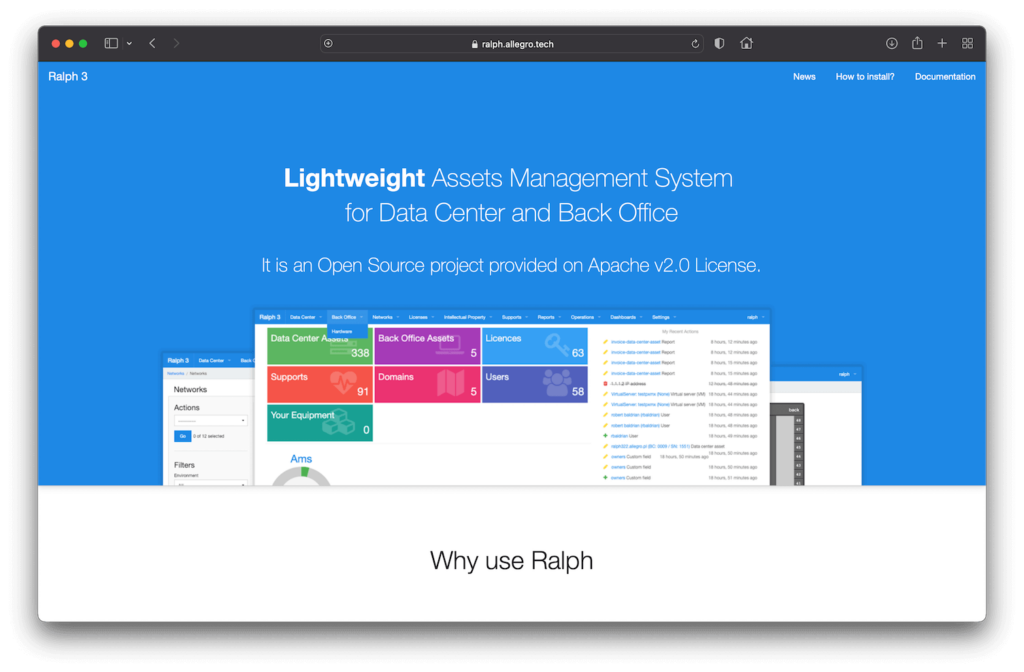
Top Features
Ralph is a top-rated business management software that offers a wide range of features to help businesses streamline their operations. Best of all, Ralph is highly customizable, so businesses can tailor the software to their specific needs. Here are just some of the ways Ralph can help businesses thrive:
1. DCIM: Domain management is the ability to control and manage the different domains that a business has. This can include creating and managing users, as well as creating and managing sites. It can also include setting up email servers and other features related to domain management. This is important for businesses as it allows them to easily manage their different domains and ensure that everything is running smoothly.
2. Custom Fields: Custom fields allow businesses to add additional information to their tickets, cases, and other items. This can be helpful in tracking data that is specific to the business. For example, a business might track the number of customer service inquiries they receive each day or the amount of revenue generated from a specific product line. Custom fields make it easy to track this data and access it when needed.
3. Dashboards: Dashboards provide businesses with a quick way to see the most important data related to their operations. This can include data such as sales figures, customer satisfaction ratings, or website traffic stats. Dashboards can help businesses track progress over time and identify areas where they may need to make changes.
4. API: API stands for application programming interface. An API allows businesses to access certain features of a software program or website. This can be helpful in automating tasks or in integrating data from different sources. For example, a business might use an API to pull customer data from their CRM system into their marketing automation platform. This allows them to more easily create targeted campaigns based on customer data.
5. Ralph-cli: Ralph-cli is a command line interface for the Ralph ticketing system. It allows businesses to interact with Ralph using commands that can be run from a terminal or command prompt. This can be helpful in automating tasks or in scripting routine tasks. For example, a business might use ralph-cli to automatically create new tickets based on certain criteria or to update ticket status based on decisions made by a script.
6. Cloud Sync: Cloud sync allows businesses to synchronize their Ralph data between multiple devices. This can be helpful in ensuring that all devices have the most up-to-date information and in allowing employees to access Ralph data while away from the office.
2. Snipe-IT
Snipe-IT is a free and open source IT asset management system that helps you keep track of your assets, licenses, and users in one place. It’s easy to use and install, and it has a wide range of features that make it an incredibly powerful tool for tracking your assets. Snipe-IT is built on Laravel, a PHP framework, and it uses a MySQL database to store its data.Snipe-IT has a clean and modern interface that is easy to use, and it offers a wide range of features that make it an incredibly powerful tool for tracking your assets. It’s easy to install and set up, and it has a wide range of features that make it an incredibly powerful tool for tracking your assets. Snipe-IT is the perfect tool for small businesses and organizations that need to track their assets centrally.
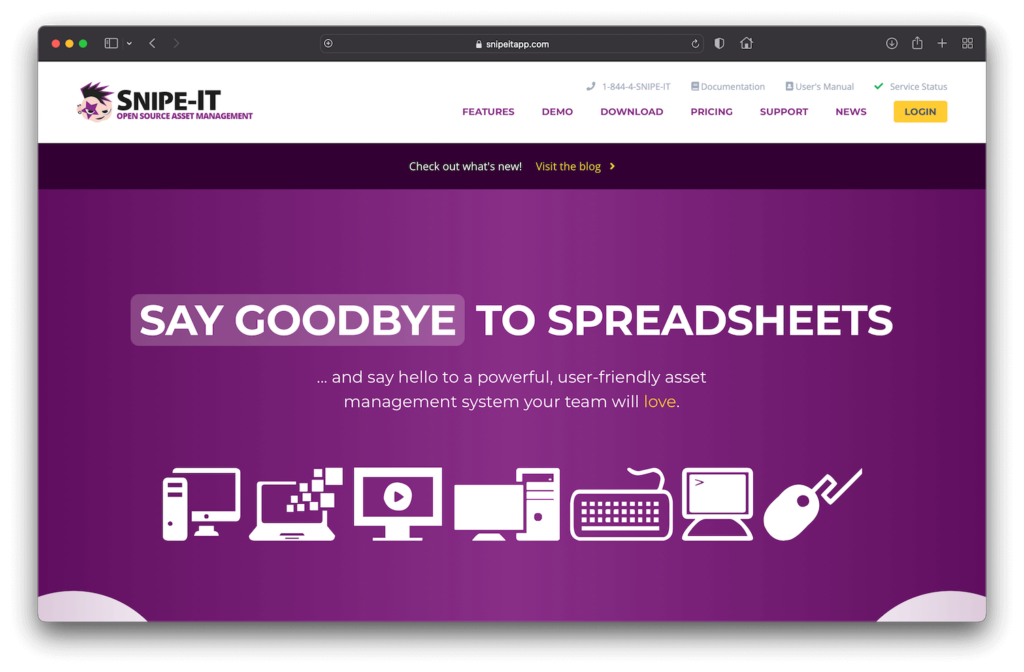
Top Features
Snipe IT is a free and open source asset management system that helps you keep track of your IT assets. It is built on Laravel and has a beautiful, modern interface. Snipe IT has many great features, but here are the top 7:
1. Asset Management: Snipe IT makes it easy to track your assets, with support for barcode scanning and QR code generation. You can also add custom fields to track additional information about your assets.
2. Incident Management: Snipe IT includes a powerful incident management system, which lets you track and resolve problems with your assets. Incidents can be assigned to specific users, and you can set up SLAs and escalate incidents if they are not resolved in a timely manner.
3. Licensing Management: With Snipe IT, you can keep track of all the licenses for your assets, including expiration dates and number of seats. This is great for maintaining compliance with software licenses.
4. Supplier Management: Have multiple suppliers for your assets? No problem! With Snipe IT, you can add supplier details and contact info, so you can easily order replacement parts or get support when needed.
5. User Management: need to give some users access to your asset management system? With Snipe IT, you can easily create user accounts and assign them permissions to view or edit assets, run reports, or manage incidents.
6. Reporting: Snipe IT comes with over 30 built-in reports, which you can schedule to run automatically or export to PDF/Excel for further analysis. You can also create custom reports using the query builder tool.
7 . API Access: want to integrate Snipe IT with other systems? No problem! Snipe IT has a REST API that lets you access asset data programmatically. You can also use the API to write custom scripts or integrations.
3. AssetTiger
Managing physical assets is a complex and time-consuming task, especially for businesses with a large number of assets. AssetTiger is a cloud-based asset management software that helps businesses track and manage their physical assets. The software lets businesses keep track of all their assets in one place, including location, condition, and maintenance history. In addition, AssetTiger can generate reports on asset utilization and performance, helping businesses to make better decisions about their asset management. As a result, AssetTiger can save businesses time and money by helping them to manage their physical assets more effectively.
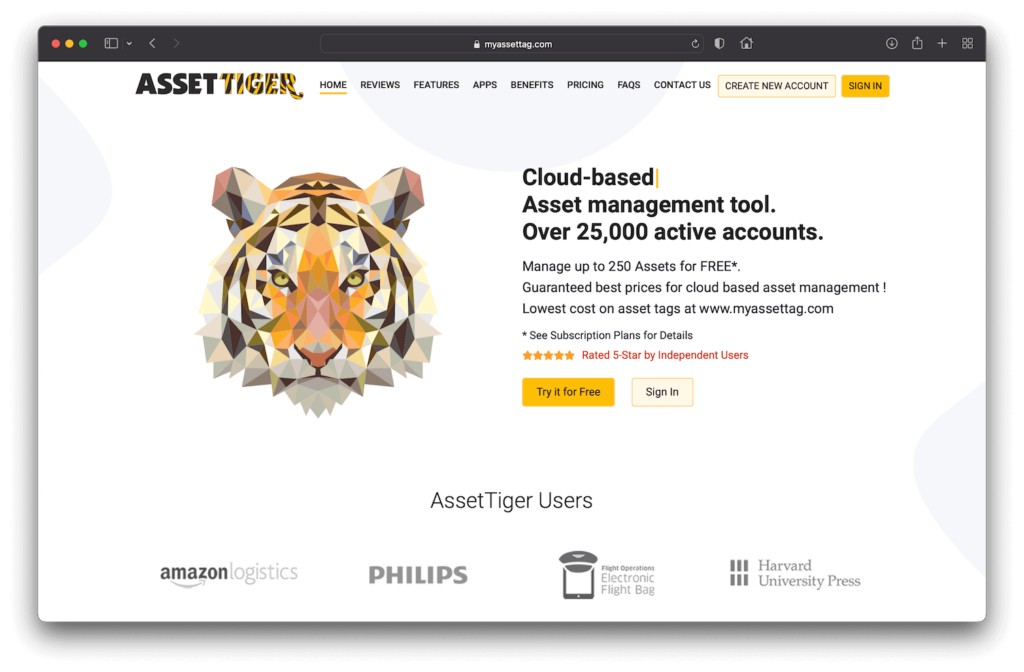
Top Features
AssetTiger is a powerful asset management software that helps businesses keep track of their assets and inventory. The software includes a variety of features that make it easy to track and manage assets, including:
1. Asset Identification: AssetTiger allows businesses to identify and track their assets with unique identification numbers easily. This makes it easy to locate assets and prevent them from being lost or stolen.
2. Tracking: The software includes a variety of tracking features that allow businesses to keep track of their assets, including where they are located, who is using them, and when they were last used.
3. Reporting: AssetTiger provides businesses with detailed reports on their asset utilization, including information on how often assets are used, where they are located, and who is using them.
4. Maintenance: The software includes features that help businesses schedule and track asset maintenance sessions. This helps businesses keep their assets in good working condition and avoid expensive repairs.
5. Depreciation: AssetTiger includes a depreciation calculator that helps businesses estimate the value of their assets over time. This feature is essential for financial planning and budgeting purposes.
6. Security: The software includes security features that help businesses protect their assets from unauthorized access or theft. This helps businesses keep their assets safe and secure.
7. Support: AssetTiger offers customer support via phone, email, and live chat. This allows businesses to get help when they need it and ensures that they can always reach a customer service representative when needed.
4. Spiceworks
If you’re looking for free network management software, Spiceworks is definitely worth checking out. It helps businesses inventory their network, track assets, monitor performance, and troubleshoot issues. Plus, it’s packed with features to make network management easier. And it’s constantly being updated with new improvements. So if you’re looking for a comprehensive network management solution, be sure to give Spiceworks a try.
Top Features
Spiceworks is a free network management software that helps businesses inventory their network, track assets, monitor performance, and troubleshoot issues. It’s packed with features to make network management easier, and it’s constantly being updated with new improvements. Here are the top 7 features of Spiceworks:
1. Centralized management: Spiceworks gives you a single, unified view into all of your devices, making it easy to track inventory, monitor software and hardware usage, and troubleshoot issues.
2. Customizable dashboard: The Spiceworks dashboard is highly customizable, so you can tailor it to fit your specific needs. You can add or remove modules, change the layout, and even customize the color scheme.
3. Built-in knowledge base: The built-in knowledge base makes it easy to find answers to common IT questions. And if you can’t find what you’re looking for, you can always ask the community for help.
4. Ticketing system: The ticketing system helps you keep track of IT issues and provides a convenient way for users to request help.
5. Network monitoring: Spiceworks includes powerful network monitoring tools that can alert you to problems before they cause downtime.
6. Patch management: Spiceworks makes it easy to keep your systems up-to-date with the latest security patches and software updates.
7. Reporting: Spiceworks provides a wide range of reports that can be used to track IT trends, monitor purchasing decisions, and more.
5. OpenMaint
OpenMaint is a free and open source software program that helps users manage their buildings and infrastructure assets. The software provides a web-based platform that can be accessed from any device with an internet connection. Users can log into the system to view and update asset information, create work orders, and track progress. OpenMaint also offers a mobile app for Android and iOS devices, which makes it even easier to stay on top of asset management tasks while on the go. One of the best things about OpenMaint is that it is constantly being updated with new features and improvements, so users can be confident that they are always using the latest version. Whether you are managing a small office building or a large complex, OpenMaint can help you keep track of your assets and ensure that they are well maintained.
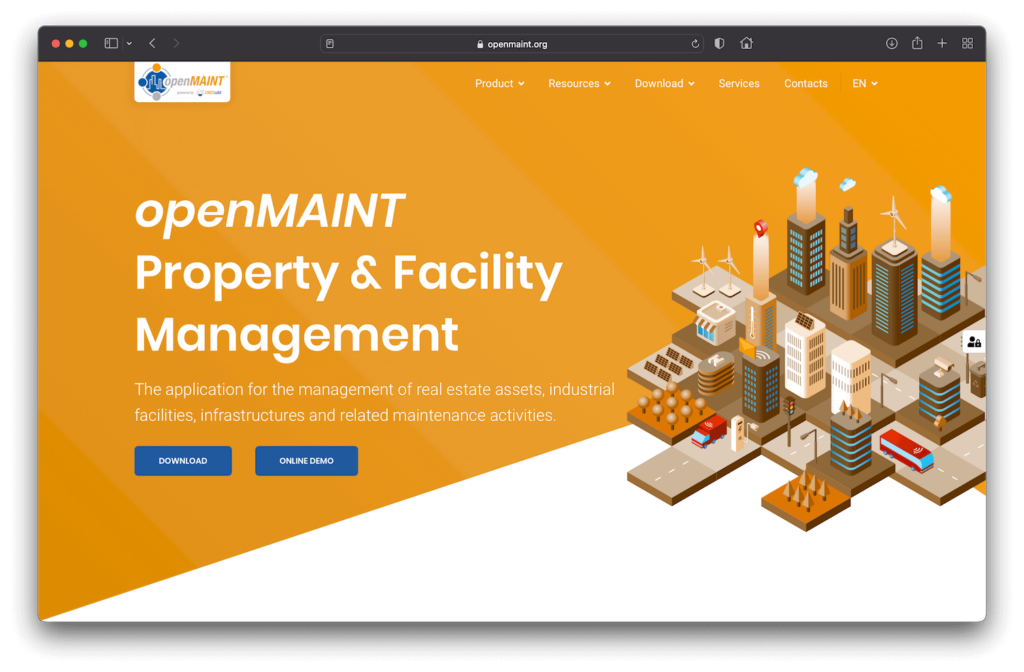
Top Features
OpenMaint is a powerful and versatile CMMS software that offers a wide range of features to streamline maintenance operations. Here are seven of the top features that make OpenMaint the right choice for your business:
1. Flexible workflows: OpenMaint offers a variety of customizable workflows to fit the unique needs of your organization. From simple ticket management to complex preventative maintenance plans, OpenMaint can be configured to match your existing processes or help you create new ones.
2. Comprehensive asset management: OpenMaint tracks all of your important assets in one place, making it easy to see where they are, what condition they’re in, and when they need to be serviced. With comprehensive asset tracking, you’ll always know exactly what you have and where it is.
3. Advanced reporting: OpenMaint’s advanced reporting capabilities give you the insights you need to make better decisions about your maintenance operations. With customizable reports and real-time dashboards, you can track key metrics, identify trends, and pinpoint areas for improvement.
4. Preventative maintenance: By scheduling regular preventive maintenance tasks, you can keep your assets in good condition and avoid costly repairs down the line. With OpenMaint’s preventative maintenance functionality, it’s easy to plan and schedule these important tasks.
5. Integration with ERP systems: For businesses that use ERP systems, OpenMaint offers seamless integration with popular platforms like SAP and Oracle. This integration allows you to share data between systems and avoid duplicate data entry.
6. Mobile app: The OpenMaint mobile app gives you access to all of the software’s features from your smartphone or tablet. With the mobile app, you can view asset information, create work orders, and more – wherever you are.
6. CMDBuild
CMDBuild is a software application that helps organizations keep track of their assets. It allows users to create a centralized database of all their assets, including information on location, type, and owner. This information can then be used to generate reports and perform analytics. Additionally, CMDBuild offers a number of features that help to streamline asset management, such as the ability to track changes over time and schedule regular maintenance tasks. As a result, CMDBuild can be an invaluable tool for any organization that needs to manage its assets effectively.
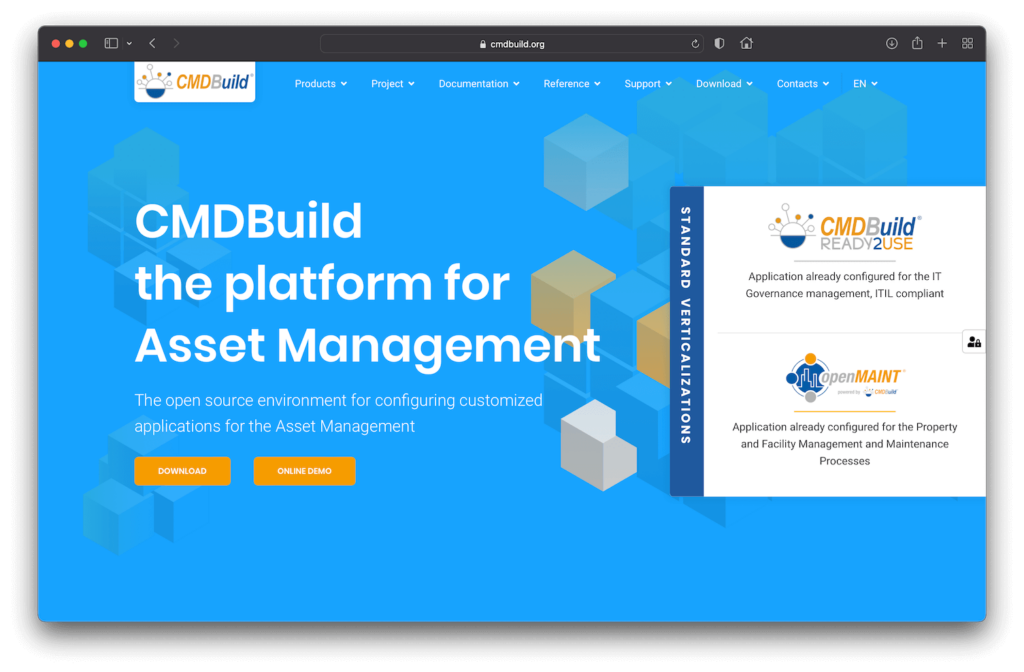
Top Features
If you’re looking for a powerful and feature-rich configuration management database (CMDB), look no further than CMDBuild. Here are seven of the top reasons to choose CMDBuild for your next project:
1. User-friendly interface: CMDBuild offers a user-friendly interface that makes it easy to navigate and find the information you need.
2. Comprehensive reports: CMDBuild provides comprehensive reports that give you a clear overview of your system’s configuration.
3. Asset management: CMDBuild includes powerful asset management features that allow you to track and manage your assets effectively.
4. Approval workflow: CMDBuild’s approval workflow ensures that all changes are approved by the relevant stakeholders before being implemented.
5. Change management: CMDBuild’s change management features make it easy to track and manage changes to your system’s configuration.
6. Version control: CMDBuild includes powerful version control features that allow you to track and manage changes to your system’s configuration over time.
7. Support for multiple languages: CMDBuild supports multiple languages, making it easy to use for teams of all sizes and locations.
7. ResourceSpace
ResourceSpace is an open source digital asset management software that helps businesses to centrally store, manage, and share their digital assets such as images, videos, and documents. It is designed to be easy to use and scalable, so that it can be used by businesses of all sizes. ResourceSpace has a number of features that make it an ideal solution for asset management, such as its search engine, which makes it easy to find the right asset; its support for multiple file formats; and its ability to integrate with other software applications. In addition, ResourceSpace is free to download and use, making it an affordable option for businesses. As a result, ResourceSpace is a valuable tool for any business that needs to efficiently manage its digital assets.
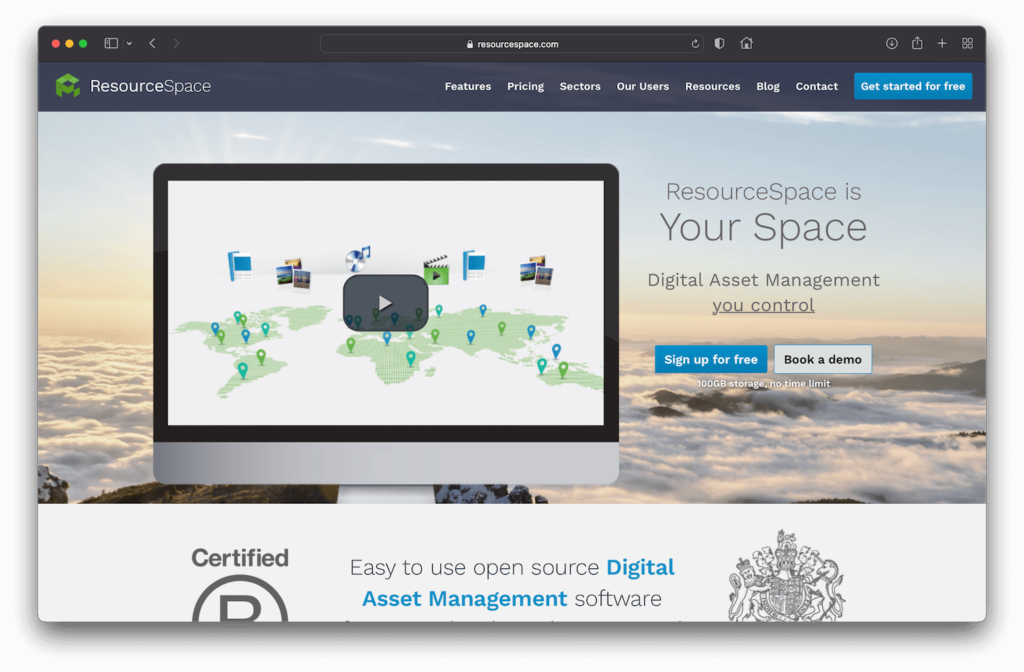
Top Features
If you are looking for a digital asset management software that is both powerful and easy to use, then ResourceSpace is the perfect solution. Here are 7 top features of this software that make it stand out from the competition:
1. Asset management- With ResourceSpace, you can manage all your digital assets in one place. This includes photos, videos, audio files, and documents. You can also add tags and keywords to help you organize and find files more easily.
2. User management- ResourceSpace makes it easy to add and manage users. You can give different users different permissions, so they can only access the files that they need. You can also track which users are accessing which files, and when.
3. Metadata- One of the most powerful features of ResourceSpace is its metadata capabilities. Metadata helps you to describe and organize your files, making them easier to find and use. With ResourceSpace, you can add as much or as little metadata as you need.
4. Version control- With ResourceSpace, you can keep track of different versions of your files. This is especially useful when you are collaborating on a project with multiple people. You can see who made what changes, and when.
5. Access control- ResourceSpace gives you granular control over who can access your files. You can set permissions at the asset level, so that only certain users can view or edit certain files. You can also password-protect assets, so that only users with the correct password can access them.
6. Security- ResourceSpace takes security seriously. All data is stored securely using 256-bit encryption. And all communication betweenResourceSpace and your browser is encrypted using SSL/TLS.
7. Integrations- ResourceSpace integrates with a variety of other software programs, such as WordPress, Drupal, and Joomla!. This makes it easy to embed assets from ResourceSpace into your website or blog posts.
Paid Alternatives to Open Source Asset Tracking Software
Jumping into the world of asset tracking can be daunting, especially if you’re not sure what features you need or which software is right for you. That’s why we’ve put together this guide to help you choose the best asset tracking software for your business. If you’re just getting started, open source asset tracking software is a great option. It’s free to use and offers a basic set of features that can be customized to fit your needs. As your business grows, you may find that you need more features and functionality than what the free version offers. In that case, it’s time to upgrade to a paid solution.
Paid asset tracking software typically includes additional features such as real-time data sync, support for multiple users, and advanced reporting. There are many paid alternatives to open source asset tracking software that can give you the power and flexibility you need to manage your growing business. Here are just a few of the top paid options on the market today:
1. Ivanti Neurons ITAM
Ivanti Neurons ITAM is a comprehensive asset management solution that offers a wide range of
features, including license management, software deployment, and compliance reporting. The tool is designed for large enterprises and can be customized to fit the specific needs of your organization. Prices start at $60 per node.
2. EZOfficeInventory
EZOfficeInventory is a cloud-based asset tracking solution that offers a user-friendly interface
and an impressive array of features, including check-in/check-out functionality, barcode scanning, and real-time asset location tracking. Prices start at $35 per month for up to 250 assets.
3. AssetPanda
AssetPanda is another cloud-based solution that offers an intuitive interface and a wide range of features, including asset lifecycle tracking, work order management, and integration with popular accounting software platforms. Prices start at $45 per month for up to 250 assets.
Final Words
Office Asset Management Software is a computer program that helps businesses keep track of their office assets. This can include everything from office supplies to computers and printers. In this blog post, we took a look at some of the best free, open-source asset-tracking software options available. Despite the many benefits of using open source software for asset tracking, some businesses may be hesitant to make the switch.
However, with so many options available and support readily available online, there’s no reason not to at least consider making the change. Have you tried any open source software for your asset tracking needs? Let us know in the comments below!


